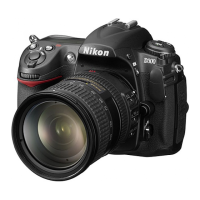While it is possible that you could reach 100 images in a
single burst, it is improbable. Your camera is limited by the
size of its buffer and the type of image you are shooting.
There’s a list in your camera user’s manual that specifies how
large your camera’s buffer is for each image type. In case
you’re interested in the raw buffer capacity data, the D300S
list is on manual page 394, while the D300 list is on manual
page 402.
Here’s a summary of what the two user’s manuals report:
▪ NEF (RAW) files – The D300S holds 18 to 45 images,
and the D300 holds 18 to 27 images—according to
whether you are shooting in 12- or 14-bit color depth and
whether you are using compression or not.
▪ TIFF files – The D300S holds 16 to 27 images, and the
D300 holds 16 to 29 images—according to whether you
are shooting L, M, or S size.
▪ JPEG files – The D300S holds 44 to 100 images, and
the D300 holds 43 to 100 images—according to whether
you are shooting in L, M, or S size; in Fine, Normal, or
Basic; and finally, whether you have selected Optimal
quality or Size priority compression.
So, unless you are shooting the smaller JPEG basic files,
you’ll fill up your camera buffer long before you reach the
maximum of 100 shots specified by Max. continuous release.
Here are the screens and steps used to configure Max.
continuous release (see Figure 4-38):
327

